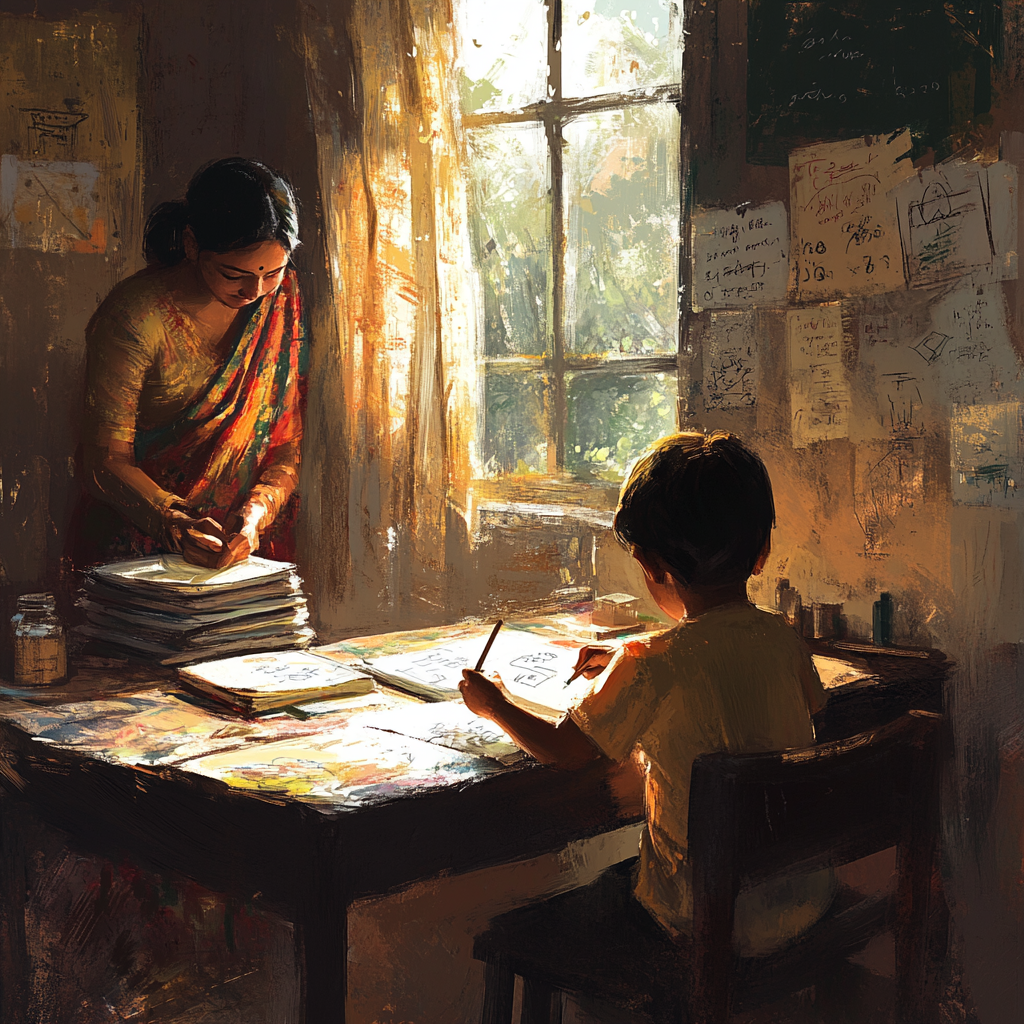
partime designer
It began in the margins—literally. The edges of my “Amar Boi” textbooks were the first canvas I knew, where numbers shared space with sketchy outlines of birds, rooftops, the faces I saw in passing. I didn’t think of it as art then. It was simply what my hand did when my mind wandered.
We didn’t have much growing up, but my mother made do in ways that felt almost alchemical. She mapped our school schedules to avoid extra rickshaw fare, turning necessity into rhythm. I attended the morning shift, then followed her on errands across the city. Sometimes we’d stop at her friend Tiabanu Aunty’s clinic, where I’d sit quietly in a corner, sketching on the pharmaceutical company’s writing pads. Even then, something in me was drawn to lines, to shapes, to the quiet act of making.
I used to imagine I’d be a painter one day. But that life—art school, exhibitions, studios—felt like another language, one I admired but didn’t know how to speak. Instead, I grew into other things: science, business, responsibility. The drawings receded into the background, the way certain dreams do—not lost, just folded away.
Then came the pandemic, and with it, a strange kind of stillness. Time, once scarce, became unfamiliar and open. In that pause, I found my way back to creating—not with charcoal or canvas, but on a screen. I studied graphic design online and offline, not with grand ambition, but with the quiet thrill of learning again. Six months later, I had a certificate. More importantly, I had a beginning.
Now I design when I can, in the hours left over from other lives. It’s still part-time, still uncertain. But there’s something meaningful in the pause it offers, the way it lets me return to that boy sketching in clinic waiting rooms, drawing not for anyone else, but simply to feel a little more like himself.
Where this leads, I don’t know. And that, perhaps, is the point.
